Churches 🢔 Religious architecture 🢔 Architectural wonders 🢔 Categories of wonders
Wonder
Tournai Cathedral
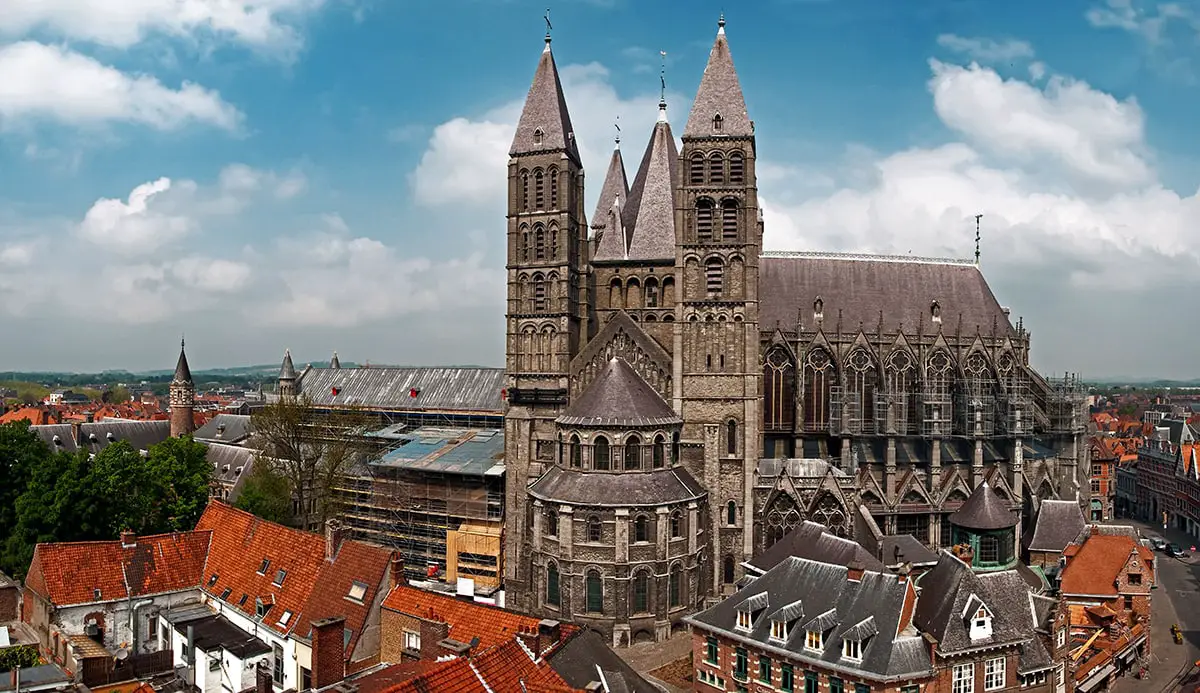
 In short
In short
The giant Tournai Cathedral is like a swan song for the retiring style in architecture of the 12th century – Romanesque style. Its architecture is grand and daring, ornamentation – very rich and in many respects this beautiful cathedral has no analogues in the world.
 48.8%
48.8%
GPS coordinates
Full name
Name in French
Name in Dutch
Architectural style
Year of construction
Branch of Christianity
Height
Length
UNESCO World Heritage status
Map of the site
If you see this after your page is loaded completely, leafletJS files are missing.
 In detail
In detail
Beginnings
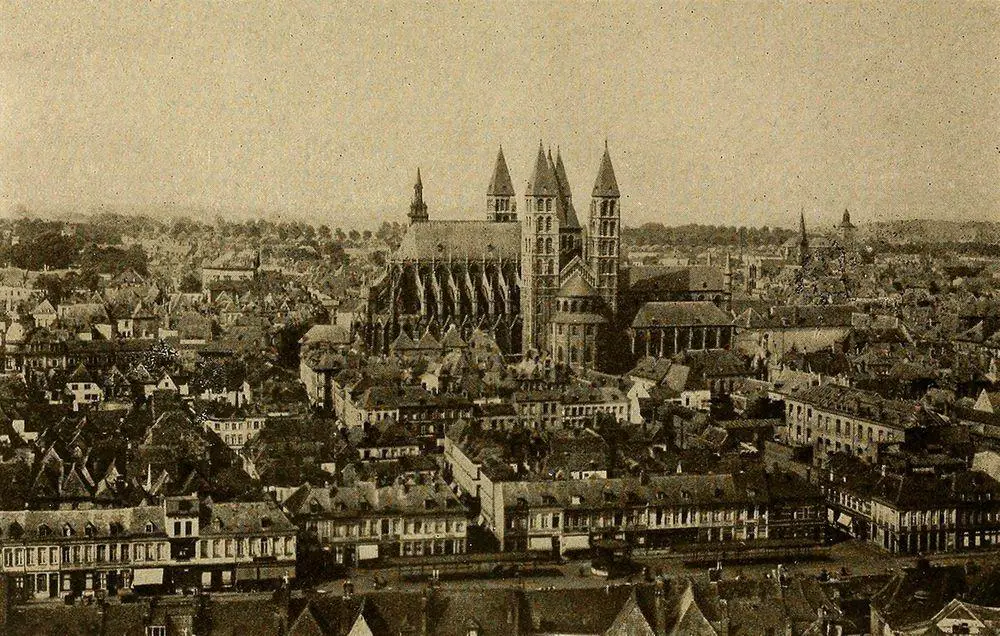
The present cathedral is not the first one in this place. By far not – in fact, in this exact place was built one of the oldest churches in this part of Europe. There is a possibility that a pagan temple was located here. In the late 5th or early 6th century, in the times of Saint Eleutherius of Tournai here was erected the first one. Thus Tournai became an important early religious center and in the Diocese of Tournai were located such important cities as Bruges, Ghent, and Lille. This explains why such a grand cathedral is located in this small town.
Next church on this site was built in the 9th century and it suffered from fire twice – in 881 and 1066.
Building of the present church
By the early 12th century Tournai became even more influential and rich. At this time very popular was also the cult of Our Lady. Thus it was decided to build a new, giant cathedral in the city in honor of Our Lady.
Construction had three important phases, thus creating a unique structure with three different parts in different architectonic styles:
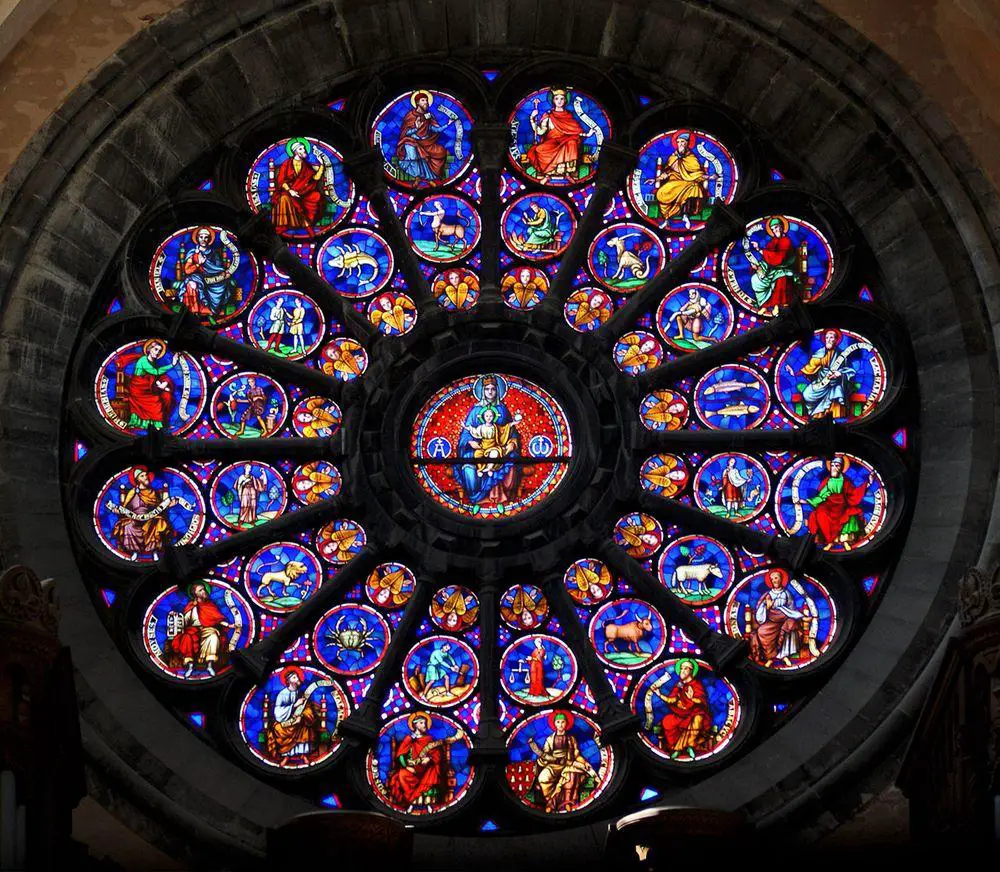
- During the first half of the 12th century there was built nave. It has been built in the Romanesque style with the characteristic, heavy, and severe character of this style. This is the oldest part of the church now.
- During the middle of the 12th century was built transept. This is an important milestone in the history of architecture, marking the end of the Romanesque style and bringing much inspiration for the upcoming Gothic style. This is the most prominent part of the building, with five great bell towers and expressive semi-circular ends. Four towers are 83 m tall. At the first sight these towers seem to be equal, but at a second look – lots of details are different. Eastern towers are called Saint-Jean tower and Marie Tower – the last with a bell named Marie-Pontoise. western towers have more Gothic details and are named – Brunin (with an entrance to the former prison) and Treille – wine was made in the basement of this tower. By 1171 the new church was built.
- In the 13th century the Romanesque choir was demolished and a new and much larger one – in Gothic style – was constructed in 1242 – 1255. In fact, it was planned to rebuild also the rest of the cathedral but this was not accomplished.
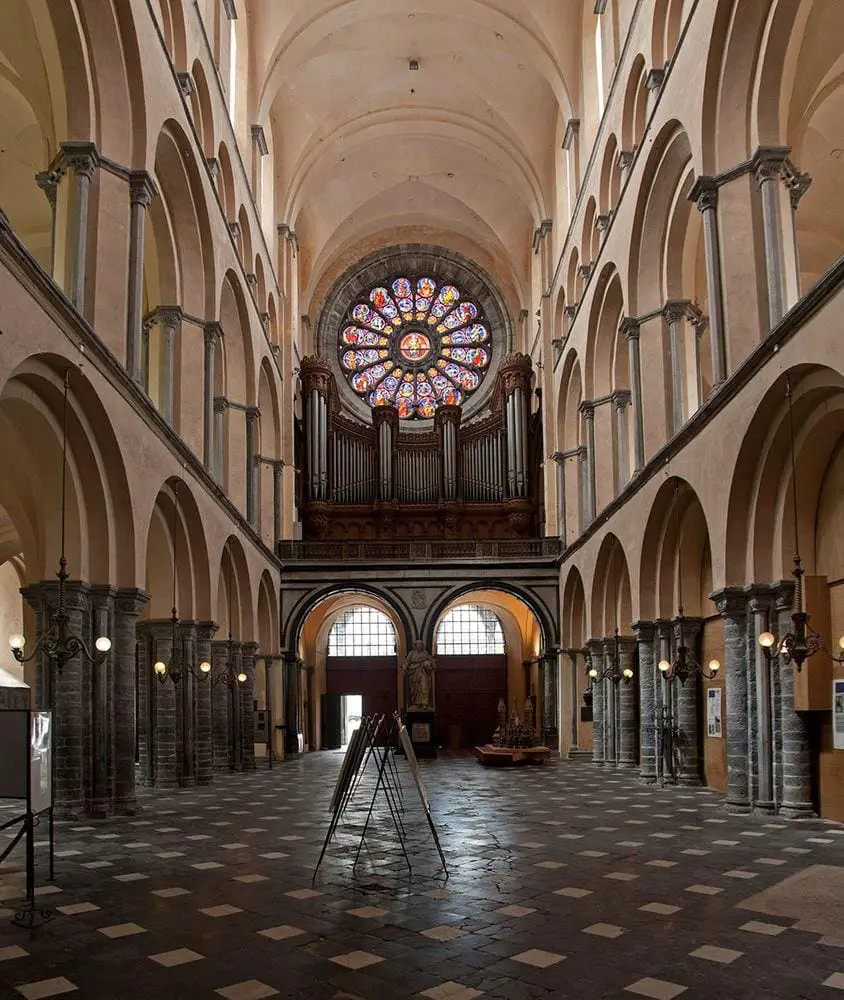
Now all these three different parts form a single, giant church. Although now it is harder to appreciate, for its time this structure has numerous innovations and represents one of the highlights of Romanesque architecture. It symbolizes the artistic freedom given to the designers and builders of this outstanding structure.
In medieval times the church was painted in bright colors – in many places the traces of these colors can still be seen.
Later history
This was one of the greatest churches in this region – although in this part of Europe are concentrated the greatest churches of the world.
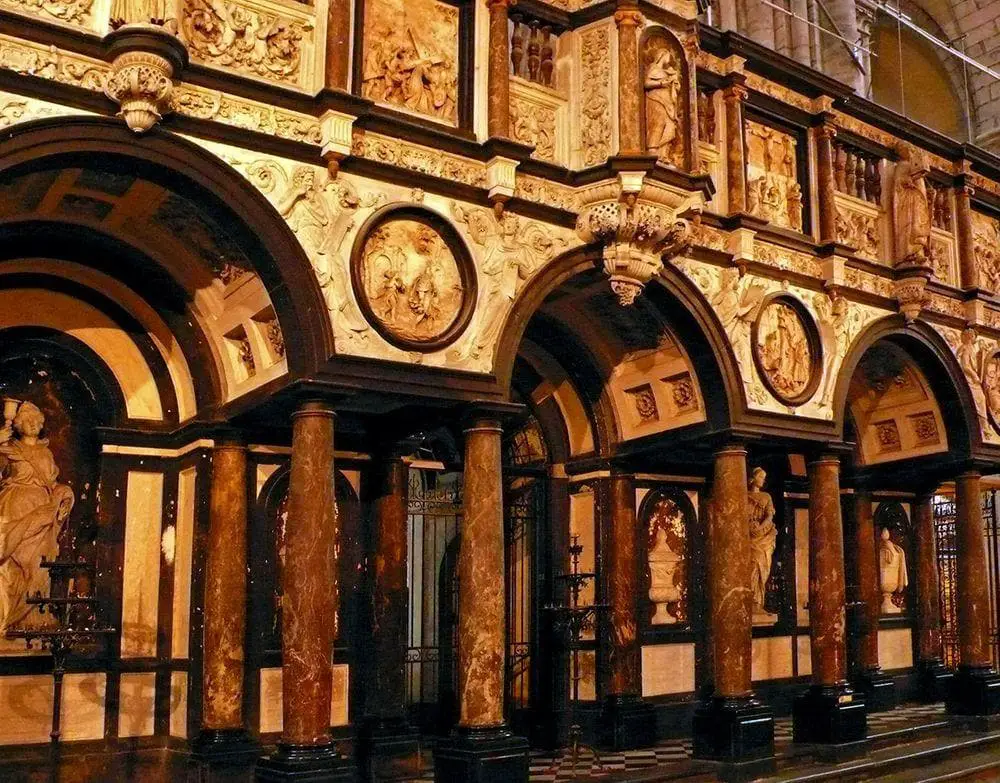
Unfortunately, the interior of the church suffered – much damage was done during the mutiny of Calvinists in 1566 and also during the French Revolution.
During the 19th century though much was restored through the efforts of bishops Monseigneur François-Joseph Hirn and Monseigneur Gaspard-Joseph Labis, thus recreating one of the most beautiful church interiors in Belgium.
The 20th century was not kind again – part of the church was destroyed during World War II.
In 1999 the cathedral was hit by a tornado and its damage turned the attention of engineers to the dire state of the whole cathedral. Especially endangered was Brunin tower which had declined by 80 cm. Since then extensive repairs are ongoing, saving the cathedral from possible collapse.
Values of art
One of the most valued works of art is the sumptuous rood screen – it was made in Renaissance style by Flemish sculptor Cornelis Floris II in 1573.
Cathedral is adorned also by paintings of Rubens and Jordaens, very impressive is the stained glass of the enormous rose window.
 Linked articles
Linked articles
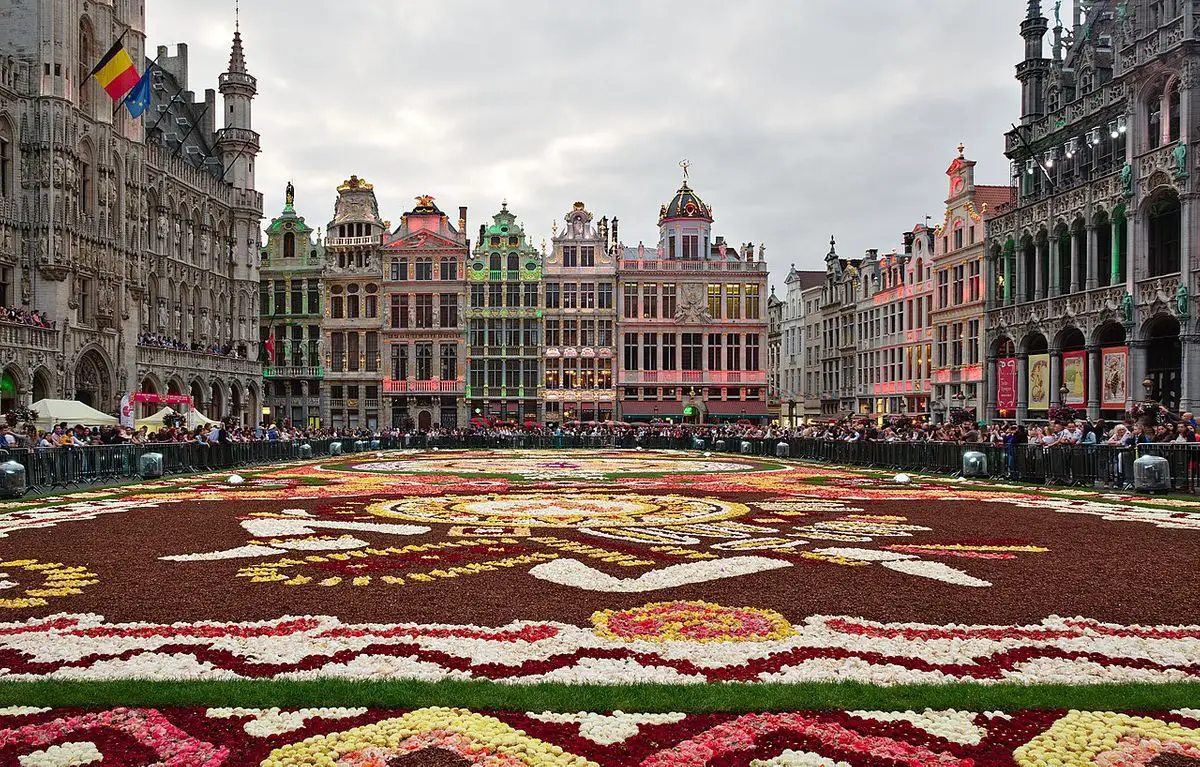
Wonders of Belgium
This picturesque country is very rich in great architecture. It is even hard to single out which architecture here is the most impressive and interesting – be it Romanesque and Gothic churches, extremely well preserved castles and palaces, or the magnificent Art Noveau jewels.
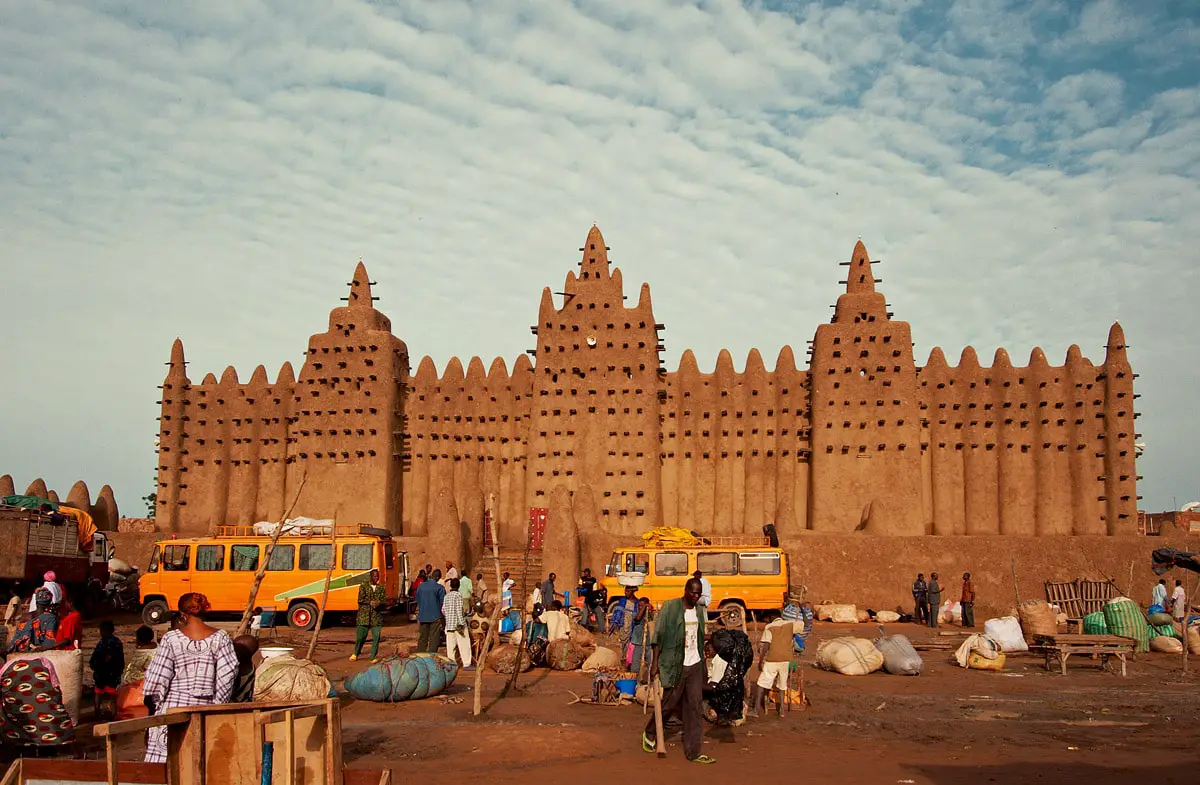
Religious architecture
Since ancient times human talents and skills have been expressed in religious architecture and arts, and traditions and rituals have evolved around pilgrimage sites. Religious buildings represent a major part of the highest achievements in architecture and crafts.
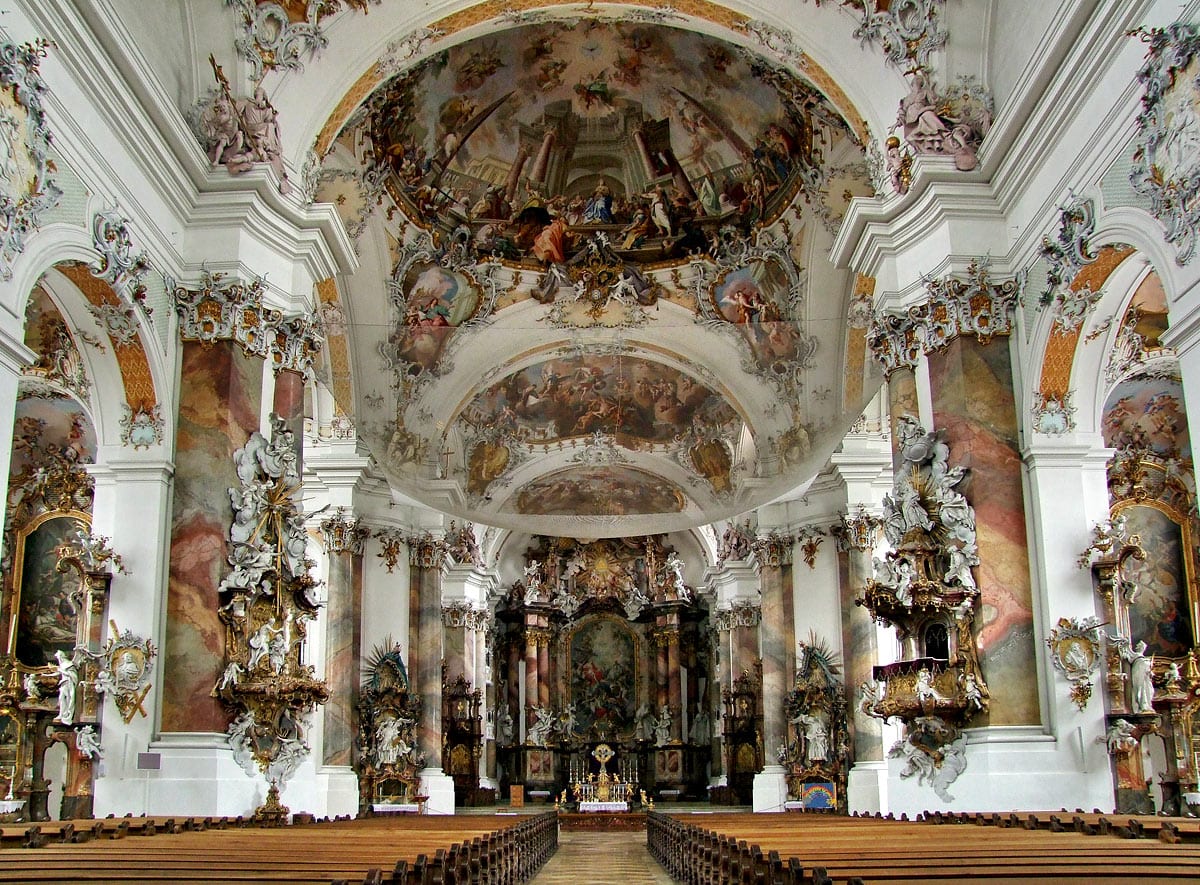
Churches
Throughout the millennia Christian churches have been the epitome of architecture and arts achievements in Western culture.
 Recommended books
Recommended books
The Restoration of the Monastery of St. Martin of Tournai
In Flanders in the year 1090, as famine began to spread over the low countries, diseased and dying paupers from near and far crowded into the cathedral of St. Mary of Tournai in hopes of a miraculous cure. When the canons of Tournai ordered that those without hope of survival be dragged outside, they unwittingly set in motion a chain of events that would lead to the restoration of the abandoned monastery of St. Martin of Tournai.
DK Eyewitness Travel Guide: Belgium & Luxembourg
Stroll through the bustling city streets, explore the Caves of Hotton, and visit the Euro Space Center when you travel to Belgium and Luxembourg. See history, art, and more in these unique and vibrant countries.


